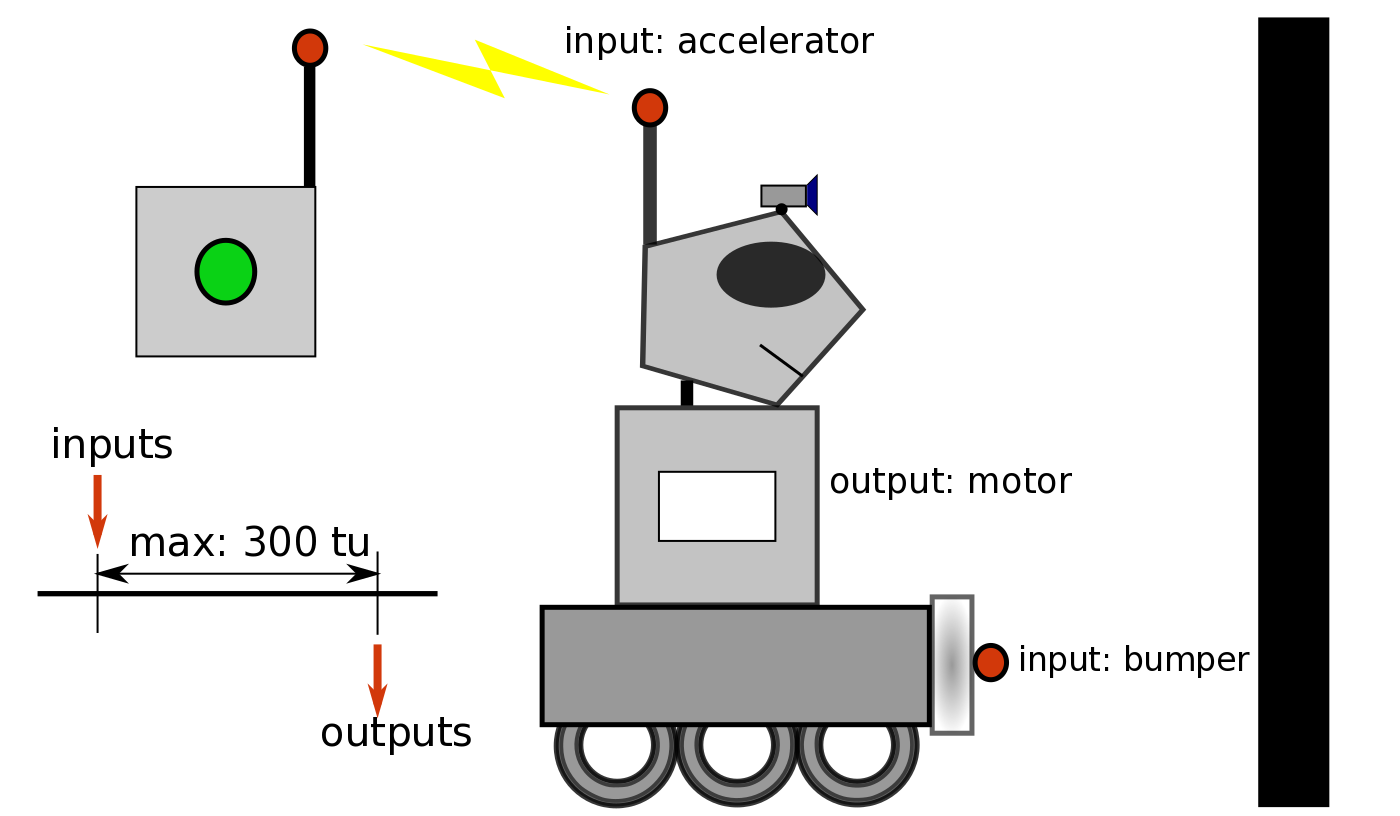Reactive systems are often designed with the help of high-level modeling tools, where real-time is not part of the model abstraction. This separation of concerns is valuable on the one hand, as it facilitates formal reasoning and determinism, as leveraged for example by the synchronous languages - and also SCCharts. On the other hand, for the modeler, it limits the possibility to control and reason about the execution time of the modeled system.
Very often, the specification for the system under development encompasses a limit on how long it may take the system to read its inputs and compute and feedback its outputs. Imagine for example a simple robot that drives as long as the accelerator button of the remote control is pressed. Assume that the robot has a bumper sensor input, which represents the detection of contact with an obstacle. As soon as such a contact happens, the robot has to stop in 300 time units (let's stay abstract here for the moment), because otherwise its crushing zone will be consumed and serious damage might occur. Driving and stopping are represented by the boolean "motor" output, which is set to true, when the robot is to drive and false when it must stop. Additionally, our the robot can write different log files and take images with its camera. For those functionalities the modeler may refer to host code library functions errorLog(), writeLog() and getImage().
